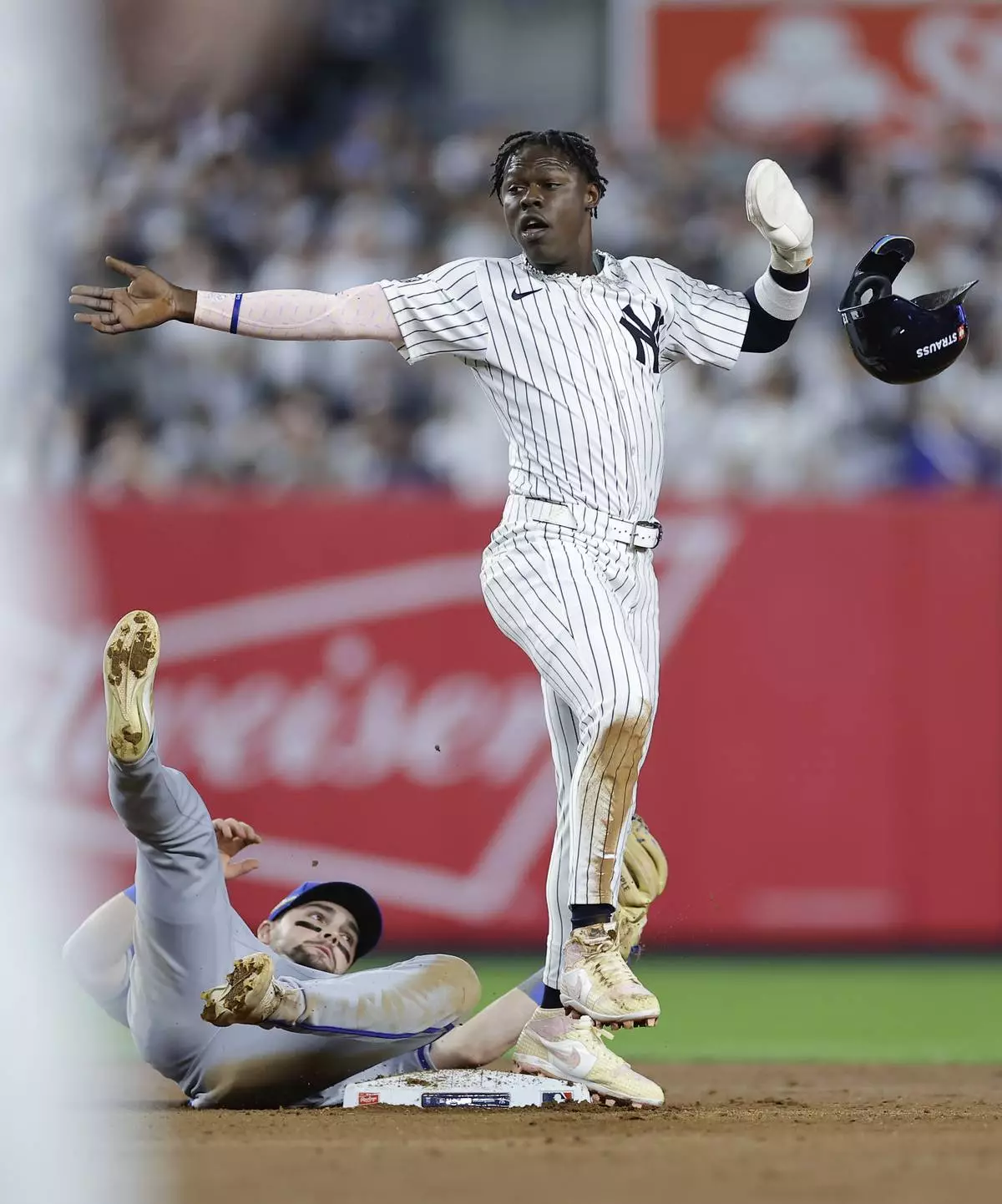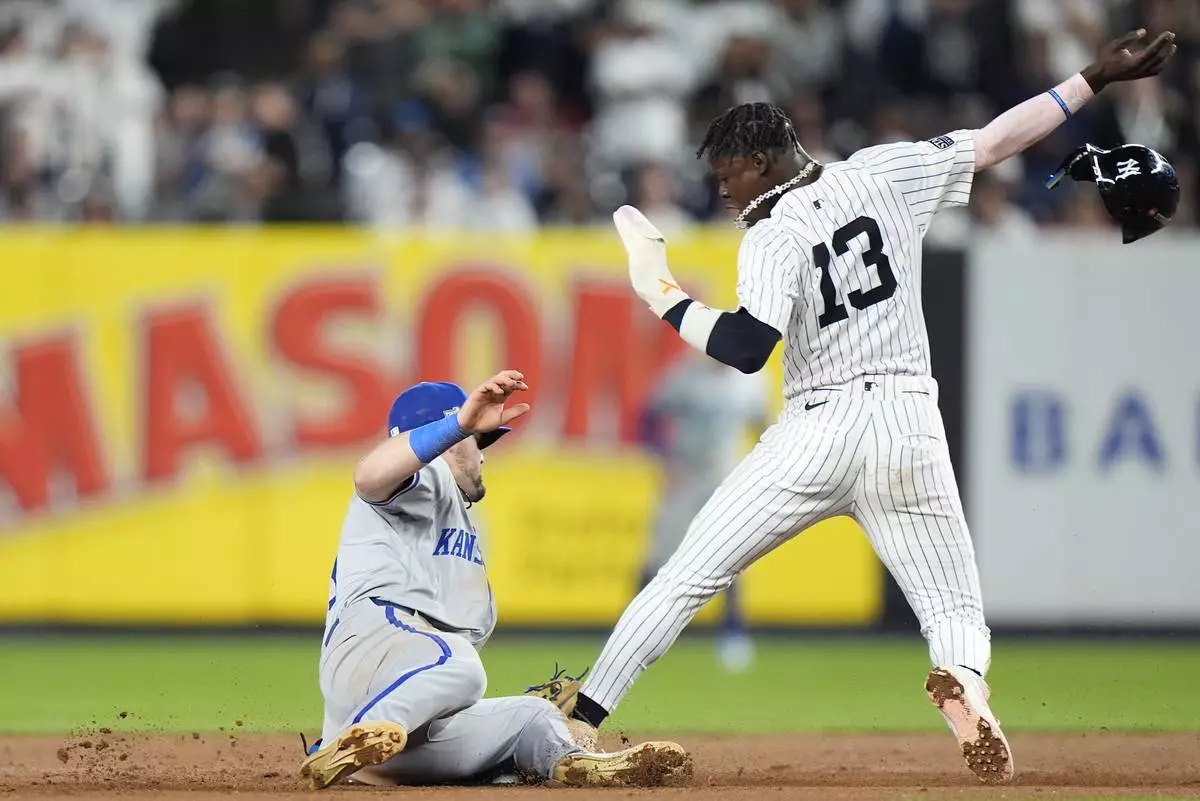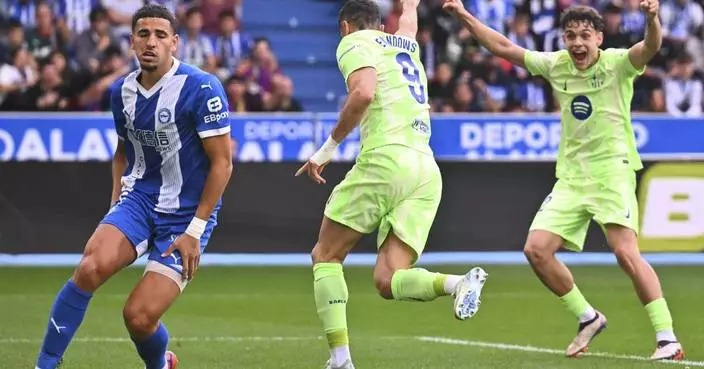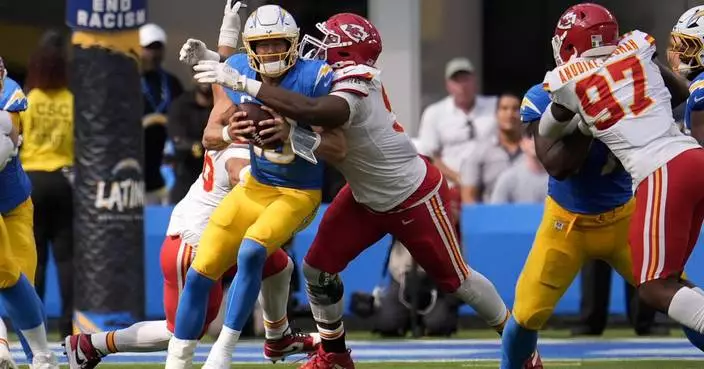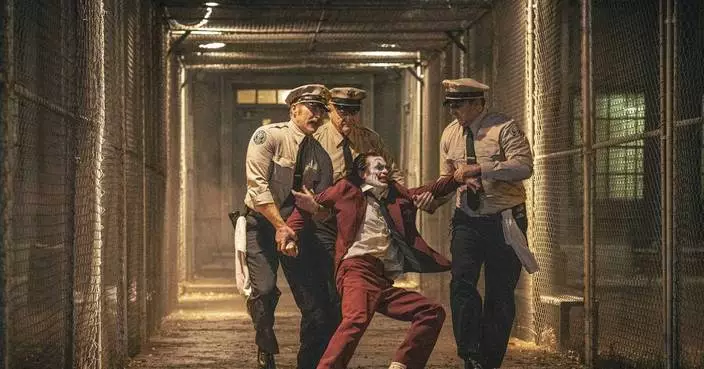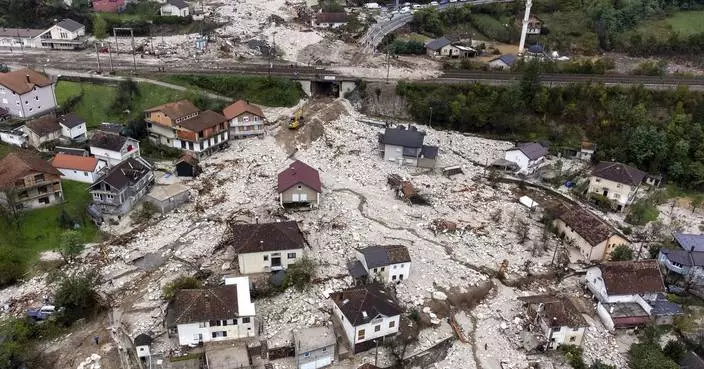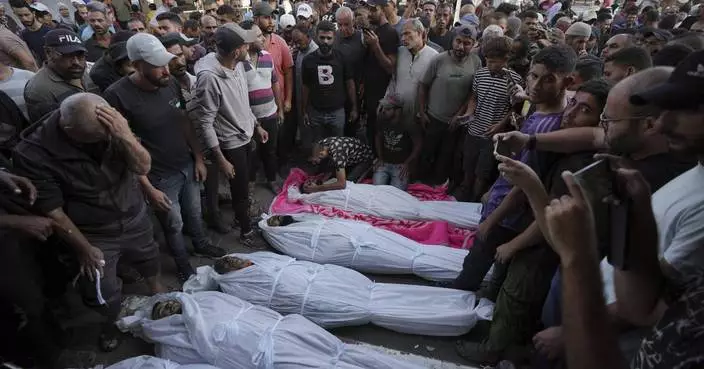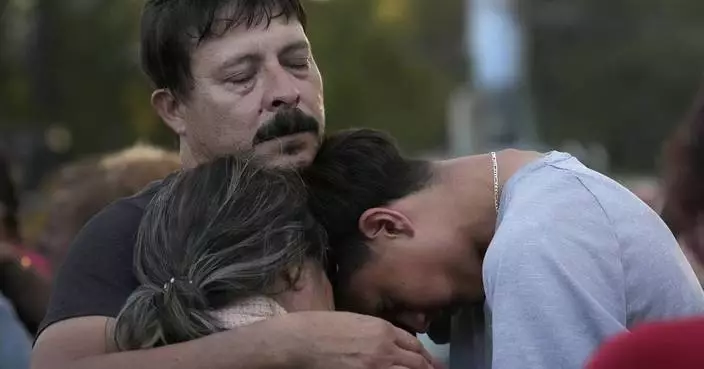WASHINGTON (AP) — President Joe Biden's terrible performance at the June 27 presidential debate has raised concerns about his age, health and ability to lead the federal government.
Administration officials have blamed his confused and at times indecipherable answers at the debate with Republican Donald Trump on a head cold, jet lag and poor preparation at Camp David. But at 81, Biden has found his health to be a key issue for many voters going into November's election. Dr. Kevin O'Connor, Biden's physician, issued his first comment since the debate late Monday, after White House press secretary Karine Jean-Pierre struggled to address questions about the president’s health at Monday’s news briefing.
Biden has extensive yearly physical exams, Jean-Pierre said. She added that most Americans don't understand the extent of the medical care provided to the president, as many people are lucky if they get to see their doctors once or twice a year. By contrast, the president's medical unit is “just steps down from the residence” at the White House. “A couple times a week,” Biden does a “verbal check-in with his doctor while he's exercising,” Jean-Pierre said, adding that he had a check-in on Monday.
There has been confusion as to whether Biden saw his doctor about his cold after the presidential debate on June 27. The White House initially said there was no medical exam, but it later said there was a “short verbal check-in” and it was determined that no exam was needed.
“He has seen a neurologist three times,” said Jean-Pierre. “Not more than that.”
The White House spokesperson repeated the phrase “three times” in 17 instances during the Monday briefing. She stressed that all three meetings with a neurologist were tied to the president's annual physical exams. But Jean-Pierre declined to say where Biden had seen the neurologist — whether the visits were at Walter Reed National Military Medical Center or elsewhere. “I don’t have anything to state as to location,” she said.
Not according to the report of the president's most recent physical, issued in February. Jean-Pierre cited that document Monday in response to reporters' questions.
That letter said “an extremely detailed neurologic exam was again reassuring” in that there were no findings consistent with a stroke, multiple sclerosis, Parkinson's or ascending lateral sclerosis. The letter added that no tremors or “motor weakness” were detected. Written by Biden's physician, O'Connor, the letter added that Biden “demonstrates excellent fine motor dexterity.”
Visitor logs show that Dr. Kevin Cannard, a neurologist who has conducted research into Parkinson's, went to the White House eight times between July 2023 and this past March.
Jean-Pierre declined to confirm the name of the doctor or say why he was going to the White House. She told reporters this was due to security reasons and noted that the White House medical unit treats more people than just the president. “There are thousands of military personnel who come on to this White House,” Jean-Pierre said. “Many of them get the care from the White House medical unit and so we need to be super careful.”
Jean-Pierre encouraged the public to “connect the dots.”
Later Monday, O'Connor released a letter with the permission of both Biden and Cannard and confirmed that Cannard had been the neurologist who evaluated the president at each of his three physicals since he took office.
But most of Cannard's visits to the White House were pursuant to his role as a specialist attached to the White House Medical Unit, treating patients there for a wide array of neurological issues over a dozen years, O'Connor said.
Cannard made similar trips to the White House during the Obama administration, according to visitor logs, and during the Trump administration — which did not publish visitor logs — according to a person familiar with the matter who spoke on condition of anonymity.
Cannard did have one visit with Biden’s personal physician this January in the White House Residence clinic, weeks before the president’s physical in February. O'Connor repeated that the findings of that physical that didn't detect signs of any neurological disorder.
“President Biden has not seen a neurologist outside of his annual physical,” O'Connor said in his letter.
At Monday's news briefing, Jean-Pierre was asked whether Biden could choose to release his full medical records. She said the president had “shared a comprehensive medical report that is pretty detailed” and in line with what was provided by former Presidents Barack Obama and George W. Bush. Sen. John McCain, in 2008, allowed reporters to review more than 1,100 pages of his medical records when he was running for president at 71, which would have made him the oldest elected president at the time.
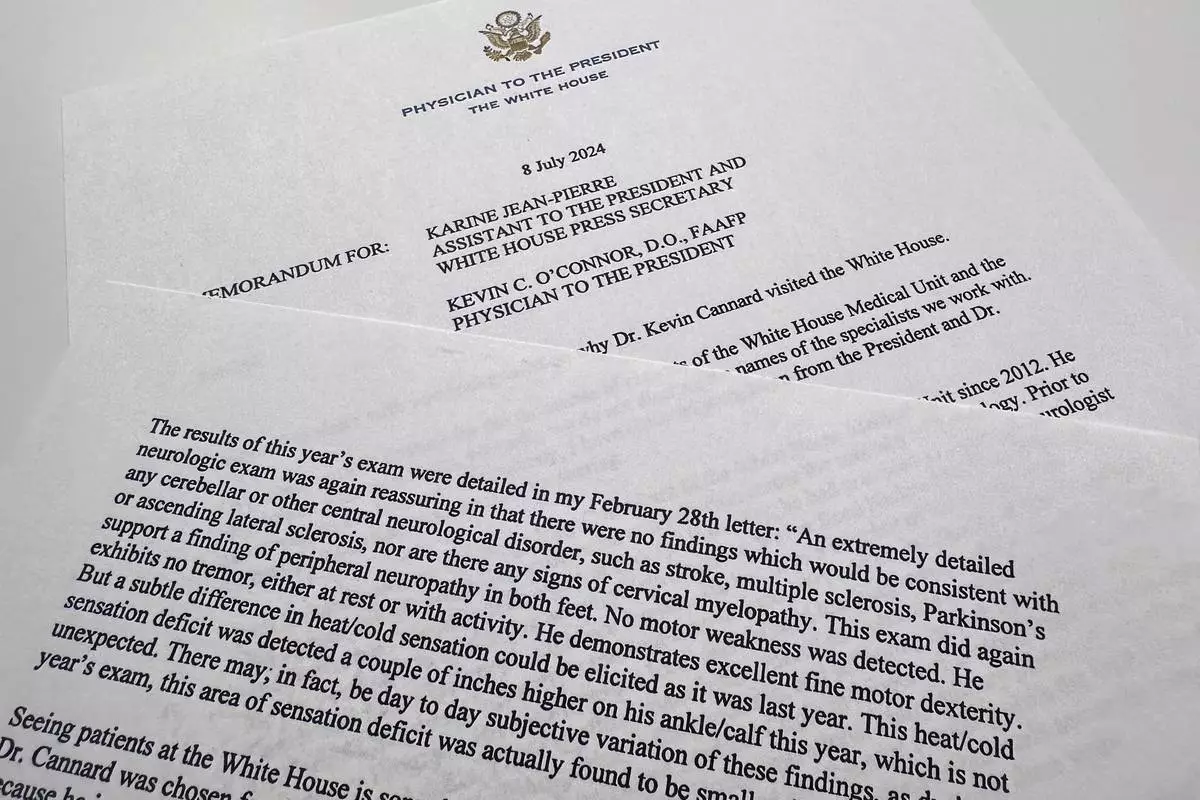
The memorandum released by the White House from President Joe Biden's physician Kevin C. O'Connor to White House press secretary Karine Jean-Pierre is photographed Monday, July 8, 2024, in Washington. (AP Photo/Jon Elswick)
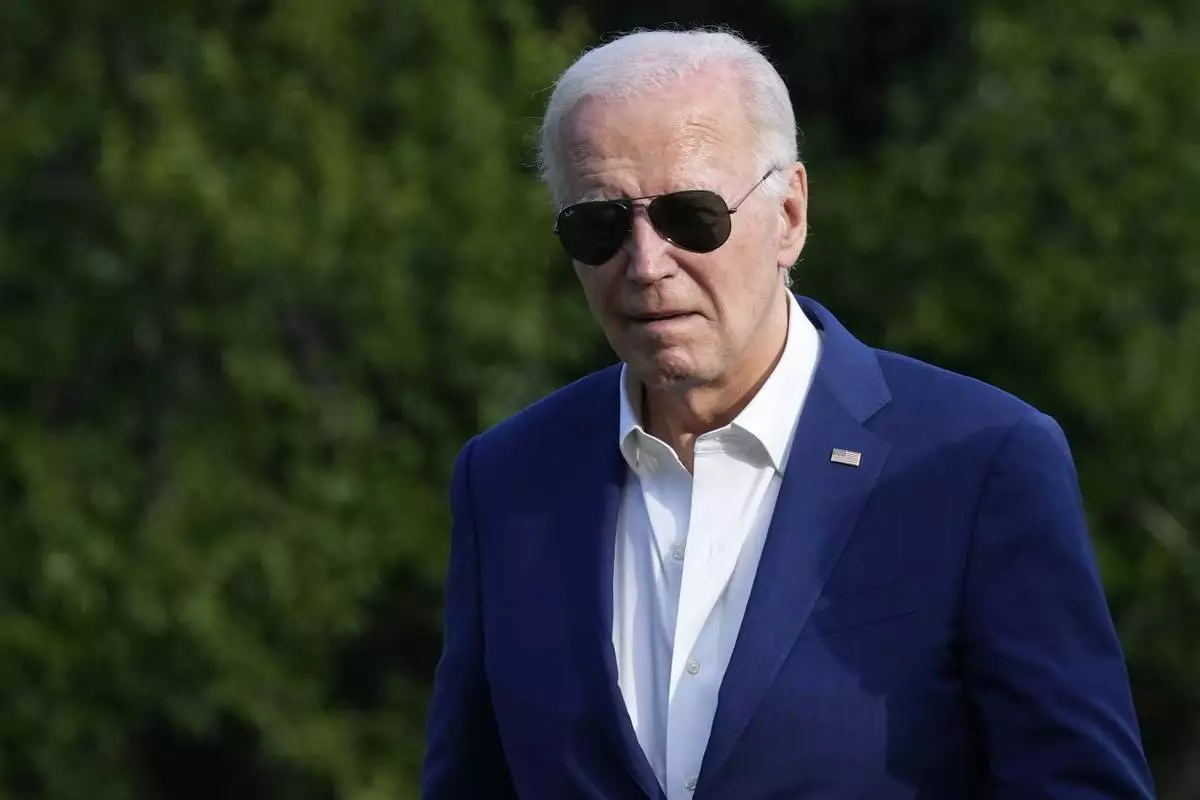
President Joe Biden walks across the South Lawn of the White House in Washington, Sunday, July 7, 2024, after returning from a trip to Pennsylvania. (AP Photo/Susan Walsh)
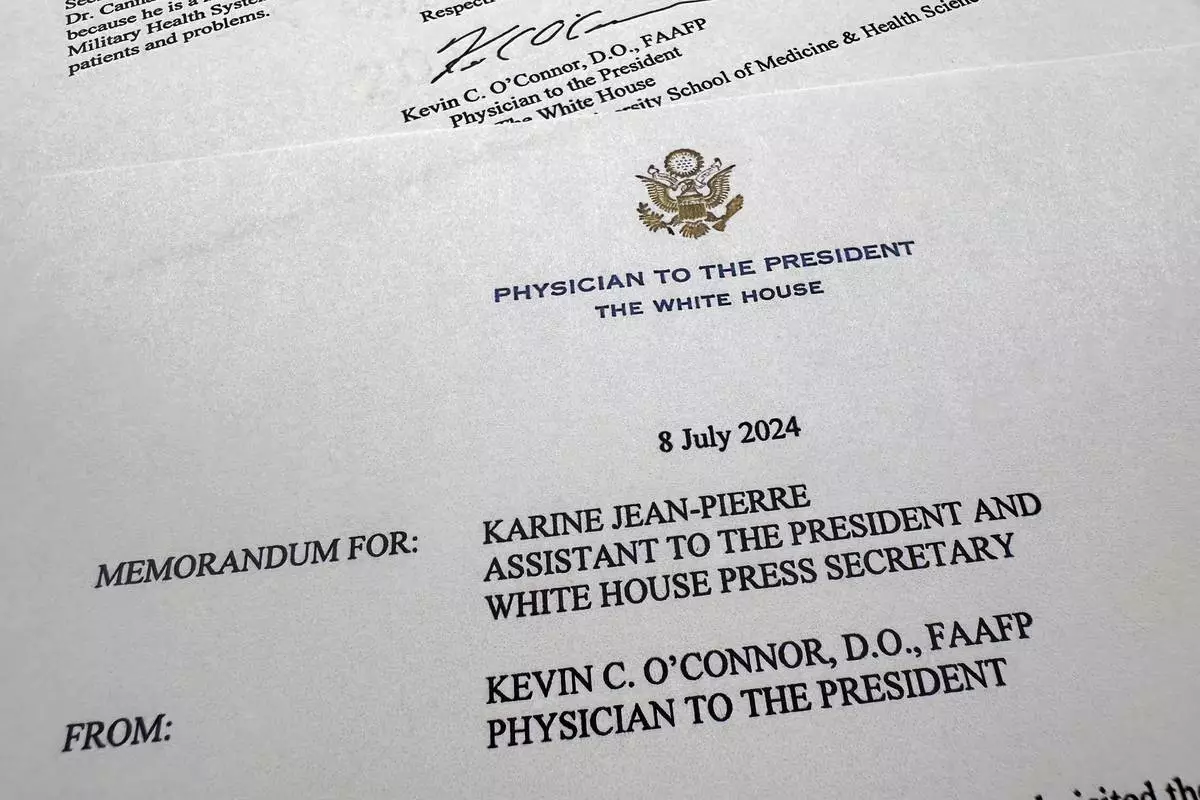
The memorandum released by the White House from President Joe Biden's physician Kevin C. O'Connor to White House press secretary Karine Jean-Pierre is photographed Monday, July 8, 2024, in Washington. (AP Photo/Jon Elswick)

White House press secretary Karine Jean-Pierre takes questions during the daily briefing at the White House in Washington, Monday, July 8, 2024. (AP Photo/Susan Walsh)



